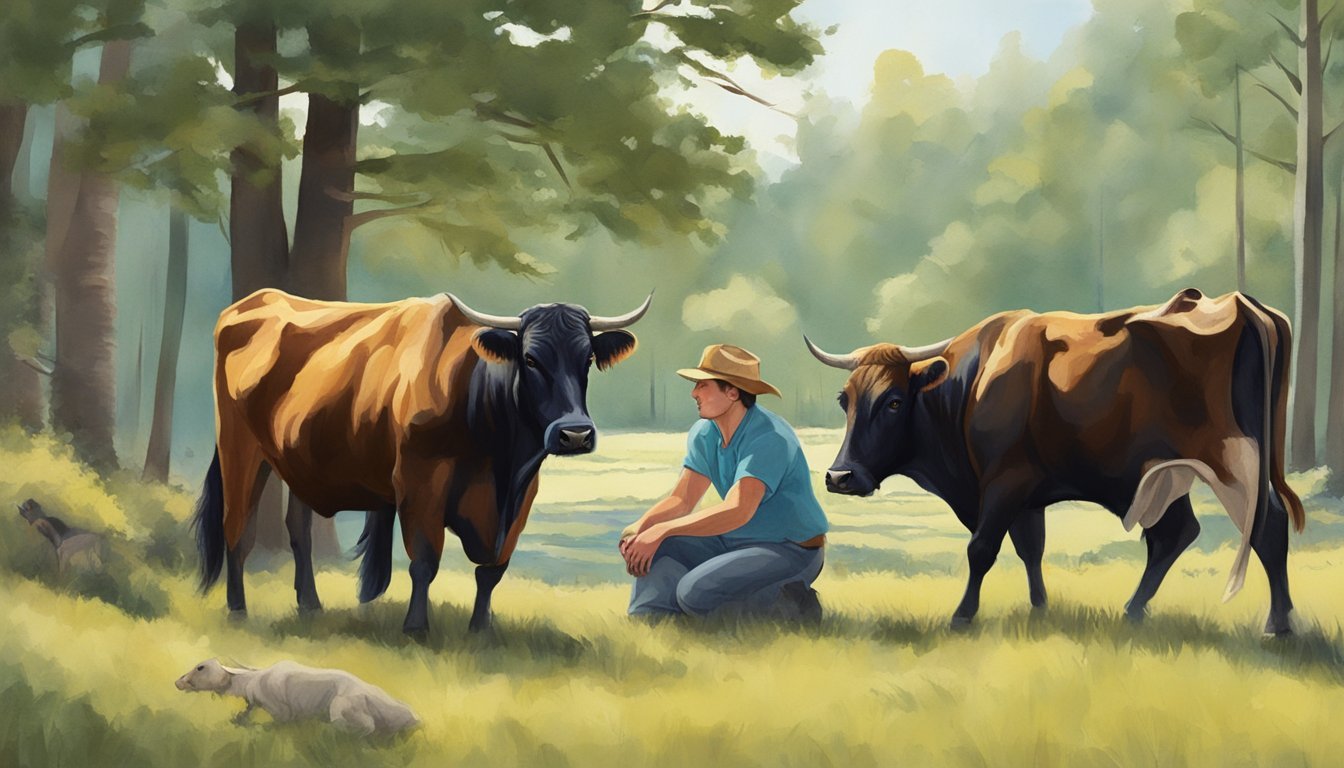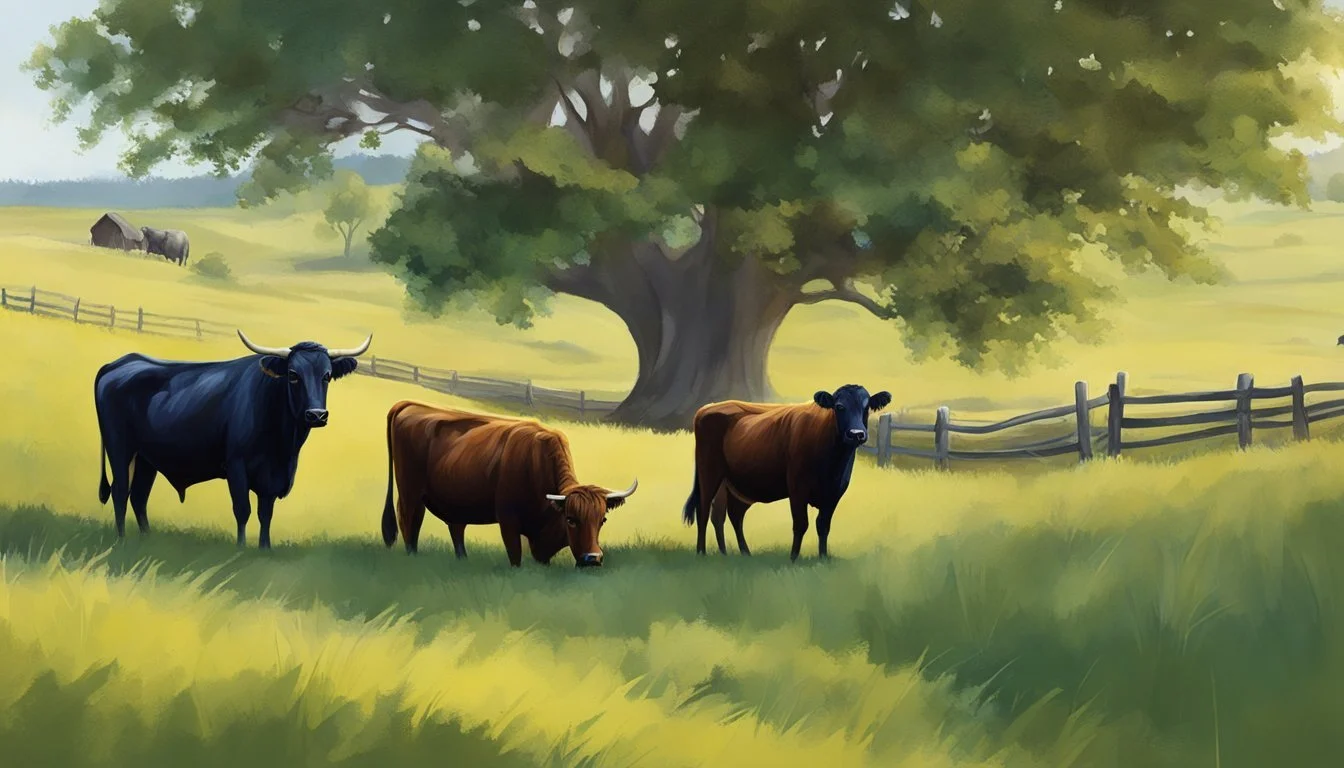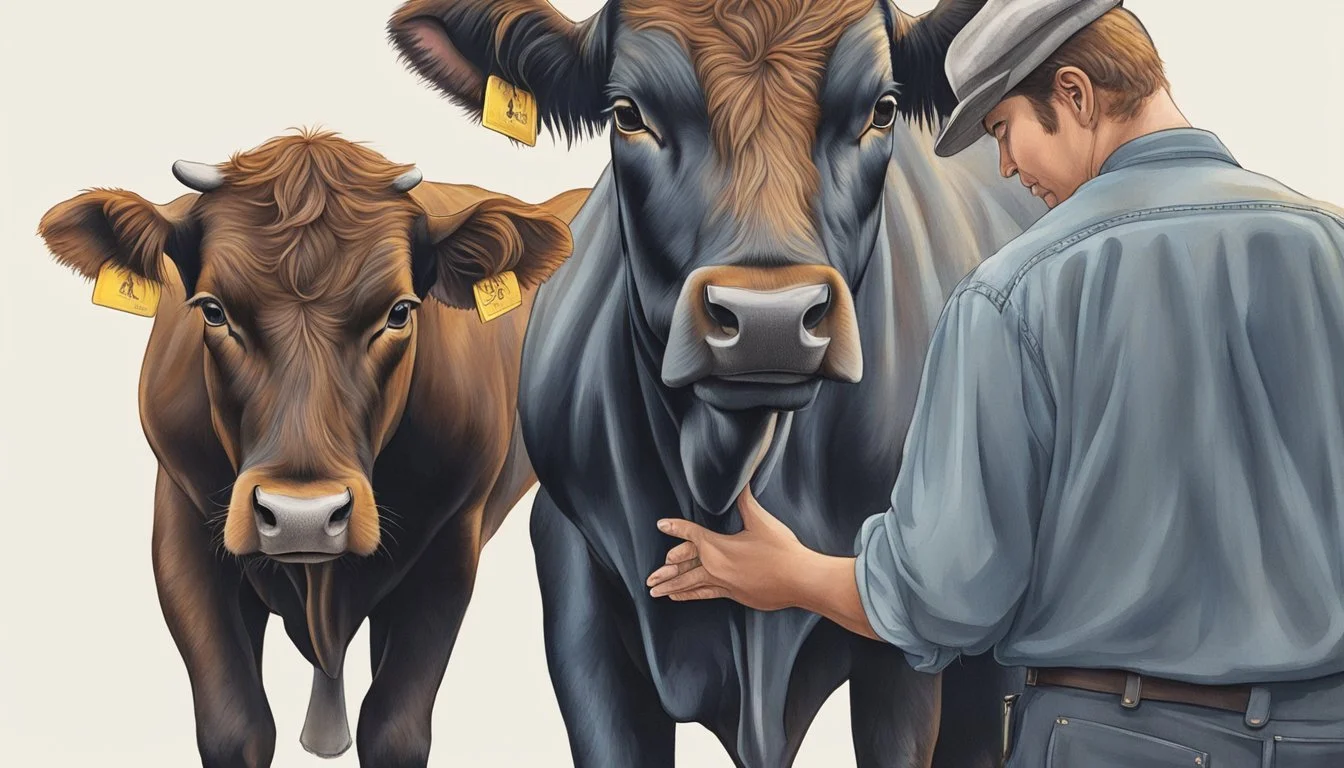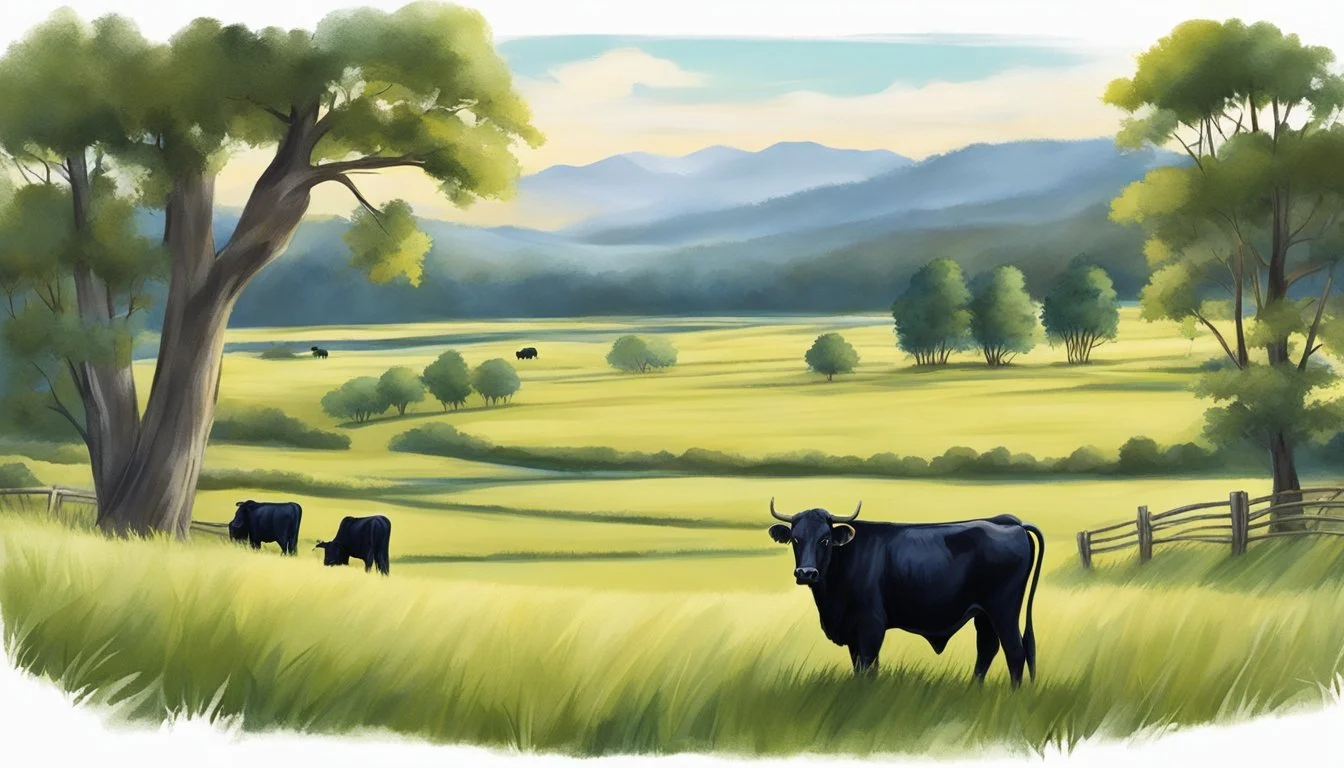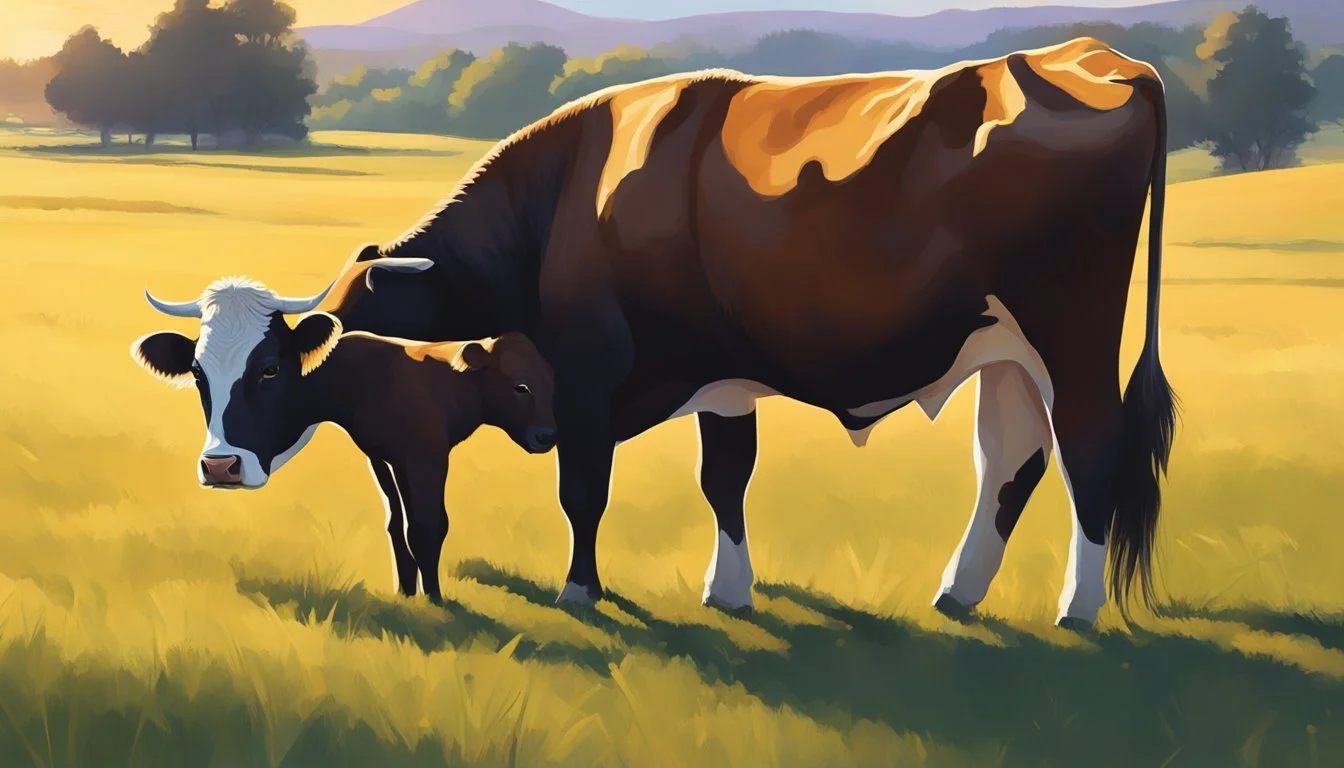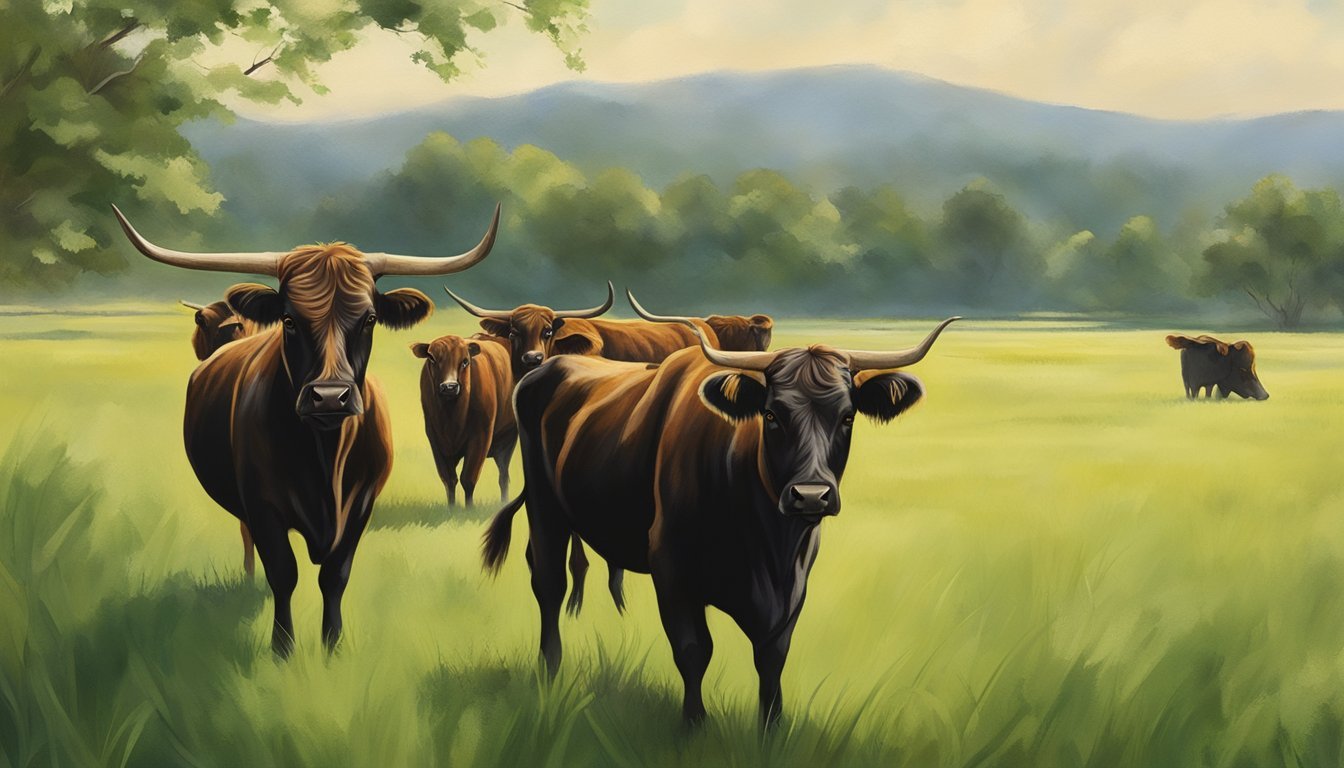Dexter Cattle as Therapy Animals
Exploring Their Unexpected Role in Healing
Dexter cattle, a breed known for its smaller stature and gentle demeanor, have recently gained attention not just for their traditional roles in agriculture, but also for their potential as therapy animals. Originating from Ireland, these cattle are often lauded for their dual-purpose utility, providing both meat and milk. Yet beyond these practical uses, Dexter cattle are showing promise in therapeutic settings, offering emotional support and comfort to individuals with various needs.
Therapy animals are typically associated with species like dogs and horses, but Dexters, with their calm and tractable nature, are proving to be a valuable addition to this group. Their size, significantly smaller than many cattle breeds, makes them less intimidating and more accessible to individuals who might feel overwhelmed by larger animals. Coupled with their known docility, Dexter cattle can interact safely with people, providing a unique and soothing presence that can facilitate stress relief and emotional well-being.
Origins and History
Dexter cattle have a storied past that anchors them in both Irish origins and associations with American breed registries. This breed's evolution captures a combination of historical significance and institutional development.
Emergence in Ireland
The Dexter breed originated in the south-western region of Ireland during the 18th century. Their emergence is typically associated with County Kerry, though they are distinct from the Kerry cattle, with the Dexter breed arguably named after a man known as Dexter, who worked as a factor on the estates of Lord Hawarden in Valentia Island. Unique for their size, Dexters are considered one of the smallest cattle breeds, known for being hardy and versatile in varied environments.
American Dexter Cattle Association and Registration
In the United States, the official registry and oversight for the breed is managed by the American Dexter Cattle Association (ADCA). Established to maintain the breed standards and promote their unique characteristics, the ADCA has played a pivotal role in Dexter cattle's history in America, including the initiation of formal registration processes. Their work emphasizes the importance of maintaining pedigree information and ensuring the continuous improvement and welfare of Dexter cattle across the country.
Physical Characteristics
Dexter cattle present distinct physical characteristics that make them particularly suitable for therapy purposes due to their manageable size and agreeable appearance.
Size and Stature
Dexter cattle are renowned for their compact and manageable size, making them an excellent choice for therapy animals. Adults typically reach about half the size of a traditional Hereford and one-third that of a Friesian. On average, they stand approximately 36 to 44 inches tall at the shoulder.
Height: 36-44 inches at the shoulder
Weight: 600-1000 pounds
These dimensions, combined with their short legs and small stature, not only contribute to their hardiness but also make them less intimidating and more accessible to people of all ages.
Color Variations
In terms of coloring, Dexter cattle exhibit a diverse palette, primarily ranging in:
Red
Black
Dun
Occasionally, one may observe Dexter cattle with patches of white, predominantly on the belly. The variety in coloration adds to their aesthetic appeal and can play a role in therapeutic settings, where appearances can impact a person's comfort and attraction to the animal.
Behavioral Traits
Dexter cattle exhibit distinct behavioral characteristics that make them well-suited for therapy animal programs.
Temperament
Dexter cattle are renowned for their docile and gentle temperament. They are inherently friendly, which allows them to interact safely and calmly with people. This breed's temperamental consistency is one of the many aspects that contribute to its suitability as a therapy animal. In therapeutic settings, this predictable behavior can instill a sense of comfort and security in participants.
Docile: They are easy to handle and work with, making them accessible even to novice farmers or therapists.
Friendly and Gentle: Their approachable nature means they are less likely to react aggressively in unfamiliar situations.
Maternal Instincts
The maternal instincts of Dexter cows are markedly strong, often translated into nurturing behaviors.
Cows: Dexter cows display a pronounced protective behavior towards their calves, yet they manage to balance their protective instincts with a serene disposition around humans.
Bulls: While Dexter bulls maintain a calmer demeanor than many other cattle breeds, caution is still exercised around them due to natural protective instincts.
These traits underscore the adaptability and safety of integrating Dexter cattle into therapeutic programs, aligning with the core objectives of such initiatives.
Health and Management
Maintaining the health and productivity of Dexter cattle, especially when they serve as therapy animals, requires diligent management practices including a balanced diet and comprehensive disease prevention measures.
Diet and Nutrition
Dexter cattle thrive on a diet that provides all the necessary nutrients to meet their specific energy requirements. Their diet typically consists of:
Roughage: This is primarily in the form of hay, which should be clean and free of dust or mold to avoid respiratory issues.
Grain: A supplemental source of energy, grain should be given in moderation to prevent excessive weight gain.
Protein: Adequate protein is crucial for growth and development; consider incorporating a protein source consistent with the cattle's dietary needs.
Mineral Supplements: Mineral blocks or loose minerals should be accessible to cater to the animal's dietary needs for calcium, phosphorus, and other trace elements.
A balanced diet not only supports their physical health but also contributes to a stable temperament, which is essential for therapy animals.
Disease Prevention
Effective disease prevention in Dexter cattle involves routine health checks and diligent adherence to a vaccination and deworming schedule. Key elements include:
Vaccinations: Protect against common bovine diseases in accordance with local veterinary guidelines.
Deworming: Periodic deworming is crucial to control internal parasites that can severely affect health and productivity.
Hooves: Regular hoof trimming helps prevent foot problems that could compromise the cattle's mobility and comfort.
Parasite Control: Implementing management practices like pasture rotation reduces the risk of parasite infestation, ensuring cattle remain healthy and fit for therapy usage.
Adhering to these health and management practices ensures Dexter cattle retain their gentle nature and effectiveness as therapy animals, while also extending their lifespan and promoting overall well-being.
Breeding and Reproduction
When considering Dexter cattle for use as therapy animals, understanding their breeding and reproductive behaviors is essential. Dexter cattle exhibit a degree of calving ease that can alleviate some challenges for breeders, while specific breeding practices ensure the health and viability of the offspring and maintenance of this heritage breed.
Calving Ease
Dexter cattle are known for their calving ease, which is particularly beneficial for therapy animal programs where minimizing stress and complications is crucial. Compared to other breeds, Dexter cows have a shorter gestation period and are less likely to encounter calving difficulties. The average gestation period for Dexter calves is approximately 283 days, with a variance of about 10 days on either side of this date. Data indicates that bull calves might have a slightly longer gestation period of 1-7 days more than heifer calves.
Breeding Practices
Dexter breeders often employ conscientious breeding practices to maintain the breed's health and desirable traits. They emphasize:
Regular monitoring of body condition scores (BCS), ensuring that cattle are in ideal condition for breeding and calving.
Selection for smaller size and dual-purpose utility, both of which contribute to Dexter cattle’s suitability as draft animals and also provide benefits in therapy settings where manageability is key.
Proper breeding practices contribute significantly not only to the continuance of this heritage breed but also to the development of animals that are well-suited for the roles they serve in therapeutic environments.
Dexter Cattle as Therapy Animals
Dexter cattle are increasingly recognized for their potential as therapy animals due to their gentle temperament and docile nature. This breeding of cattle offers mental and emotional relief and serves as a functional asset on small farms and homesteads.
Mental and Emotional Benefits
Dexter cattle showcase a gentle disposition which makes them ideally suited for interaction with individuals seeking emotional support. Their tranquil presence can help reduce anxiety and foster a sense of calm in therapeutic settings. The friendly and approachable demeanor of a Dexter cow can have a soothing effect, particularly benefiting individuals with mental health challenges by providing comfort and reducing stress.
Therapeutic Influence:
Lowered stress levels: Regular interactions can lead to decreased cortisol levels.
Enhanced mood: Spending time with these animals can stimulate the release of endorphins.
Their size and manageability make Dexters particularly accessible for engagement in therapy sessions, where participants may engage in activities like grooming or walking, fostering a hands-on approach to emotional healing.
Therapeutic Applications on Small Farms
On small farms and homesteads, Dexter cattle serve not only as providers of milk and meat but also integrate into educational programs and therapy initiatives. Their friendly and docile attributes make them well-suited for close human-animal interactions.
Application Settings:
Small Farms: Offer safe and manageable therapy animal encounters.
Educational Programs: Utilize Dexter cattle to teach care and compassion.
Small-scale operations may find Dexter cattle to be dual-purpose, assisting with farm productivity while simultaneously contributing to the therapeutic environment. They facilitate a connection with nature and agricultural life, providing a unique form of therapy that promotes responsibility and personal growth.
Sustainable Farming Practices
Dexter cattle are renowned for their efficient feed conversion and minimal environmental impact, making them ideal for sustainable agriculture on small farms.
Grazing and Feed Conversion
Dexter cattle are efficient grazers that make excellent use of pasture resources. They are known for their hardy nature, which allows them to thrive on a variety of landscapes, including those unsuitable for other breeds. This efficiency in grazing is beneficial for farmers, as Dexters require less feed to sustain themselves, leading to a lean and high-quality meat product. Additionally, their adaptability and size are well-suited for small farms, which may have limited pastureland.
Feed Efficiency: High
Suitability for Small Farms: Excellent
Meat Quality: Lean and high-quality
Environmental Contributions
Through sustainable farming practices, Dexter cattle contribute positively to the environment. Their resilience and ability to prosper on pastures without the need for additional inputs diminishes the environmental footprint often associated with cattle farming. Moreover, Dexter cattle are considered a dual-purpose breed, efficiently producing both meat and high-butterfat milk, maximizing the output from a small herd. Their presence on a farm supports sustainable agriculture by enhancing soil fertility and promoting biodiversity.
Dual-Purpose:
Meat: Hardy and lean
Milk Production: High in butterfat, quality similar to Jersey cattle
Environmental Impact: Reduced by sustainable practices like rotational grazing
Dexter Cattle for Milk and Beef
Dexter cattle serve as an efficient dual-purpose breed, providing both quality milk with high butterfat content and tender, well-marbled beef.
Milk Properties
The milk of Dexter cattle is renowned for its high butterfat content, typically ranging between 4% to 5%, which makes it ideal for producing dairy products like cheese and butter. On average, a Dexter cow can produce about 1½-2½ gallons of milk daily. This level of production suits small-scale operations and homesteads, emphasizing self-sufficiency and quality dairy product production.
Beef Quality and Production
As for meat, Dexter cattle are appreciated for their tender meat with good marbling, contributing to the overall quality and flavor of the beef. The breed’s smaller stature leads to a smaller carcass yield, yet it does not compromise meat quality. The efficient feed conversion rate of Dexter cattle ensures that despite smaller portions, the beef produced is nutritious and flavorful, making the most out of the resources provided on a homestead.
Conservation and Genetic Diversity
Dexter cattle, a breed known for its hardy nature and manageable size, hold significant potential for conservation efforts. Their genetic traits contribute to biodiversity, with a focus on the preservation of the breed and examination of specific characteristics such as polledness.
Breed Preservation
Genetic diversity within Dexter cattle is vital to maintain the breed's resilience and adaptability. The American Dexter is an example of the breed that is often registered to ensure genetic health and track lineage. Conservation efforts mainly aim to sustain the breed in the face of increasing market demand which can sometimes lead to a reduction in genetic variability. Efforts by breed societies and registrations contribute to maintaining a diverse gene pool among Dexter populations.
Registration records aid in tracing genetics and preventing inbreeding.
Breed societies play a crucial role in the promotion and preservation of the breed.
Genetic Traits and Polledness
Dexter cattle exhibit a variety of genetic traits valuable to conservation, including their unique size and disposition. Of particular interest is the trait of polledness—the absence of horns—which is genetically inherited. Polledness is a desirable trait as it can reduce the risk of injury to other animals and handlers, and it is often favored in therapy environments where safety is of paramount concern.
Primary Colors: The three primary colors of Dexter cattle are black, red, and dun. Each color is a result of specific genetic coding, and maintaining a range of colors is part of preserving the breed's genetic diversity.
Polled Gene: The presence of the polled gene is another aspect of genetic diversity within the breed. The gene can be tracked and managed to enhance safety in therapy settings.
By ensuring these genetic traits are conserved and understood, Dexter cattle can continue to serve as effective therapy animals and contribute to conservation goals.
Community and Dexter Cattle Organizations
In the realm of Dexter cattle, community support and organizational structures play a pivotal role. Breeders associations and cattle shows are both cornerstones in fostering a robust network and promoting the breed's numerous advantages.
Breeders Associations
The American Dexter Cattle Association (ADCA) is a prominent entity providing resources and upholding the breed standard for Dexter cattle. Through this association, breeders receive guidelines and support to maintain the quality and characteristics of the breed. Members benefit from valuable resources such as educational materials, breeding advice, and a community of fellow enthusiasts committed to the health and advancement of Dexters.
Cattle Shows and Events
Cattle shows and related events serve as a platform for members to showcase the best of the breed, compete in various categories, and share best practices. These events not only highlight the advantages of Dexters as manageable and versatile livestock but also contribute to the ongoing education of the breeders through workshops and networking opportunities. The ADCA is instrumental in organizing such events, which are essential in promoting breed standards and encouraging camaraderie within the Dexter cattle community.
Applications beyond Small Farming
Dexter cattle, renowned for their smaller size, play a role beyond traditional small-scale farming. They are valuable not only for their adaptability as homestead animals but also in non-traditional agricultural roles and educational domains.
Dexter as Oxen and Draft Animals
The Dexter cow, due to its smaller size, is often overlooked as a potential draft animal. However, its compact stature and notable strength allow it to excel at tasks such as pulling carts and plows, particularly on smaller homesteads where larger oxen would not be practical. The ease of handling Dexters makes them an ideal choice for oxen and other draft animal work, demonstrating that their applications extend well beyond just meat and milk production.
Cultural Significance and Education
Dexter cattle carry with them a cultural and heritage value that contributes to educational programs. Their history is often shared in agricultural education settings, showcasing them as living examples of livestock management and sustainable farming practices. Through educational programs, these cattle introduce individuals to traditional farming techniques, animal husbandry, and the importance of preserving heritage breeds. Their manageable size and docile nature make them perfect for hands-on learning experiences, allowing people of all ages to interact with them safely and confidently.

